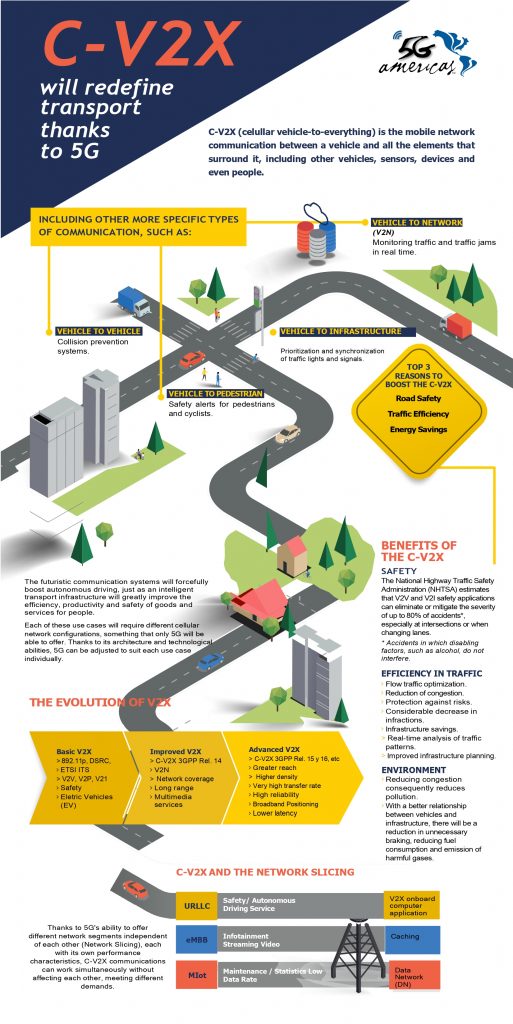Vehicle-to-all (V2X) communications through cellular networks aim to increase road safety, increase traffic and transportation efficiency, and contribute to energy savings and emission reduction for the benefit of the environment.
In recent years, the automotive and transportation industry has been experiencing great changes thanks to the incorporation of information and communication technologies (ICT). For some time now, manufacturers have increasingly started to connect vehicles by using various telecommunications platforms.
Faced with these advances, and thanks to their wide diffusion and massiveness, cellular networks appear as the ideal option to connect vehicles both with each other, with services and applications, with the infrastructure that surrounds them and even with pedestrians, bikers, and other elements.
Vehicle-to-all (V2X) communications include a wide variety of connections between vehicles and other devices. These include vehicle-to-vehicle (V2V) communication, used primarily for safety issues, such as collision avoidance; vehicle to networks (V2N), for example, to monitor traffic and provide real-time route options; pedestrian vehicle (V2P), for safety and prevention; and vehicle to infrastructure (V2I), to prioritize and synchronize traffic lights and signals, for example, and contribute to traffic efficiency.

Thanks to available wireless technologies such as 4G and 5G, vehicle-to-everything communications can be carried out via cellular networks (C-V2X, Cellular Vehicle to Everything).
Broadly speaking, all these forms of connectivity for vehicles seek to contribute to safety and accident prevention, as well as efficiency in traffic which also leads to savings in energy, fuel consumption and carbon dioxide emissions.
Currently, there are various tests that aspire to make autonomous vehicles a reality, that is, that they are driven without the need for human intervention. But, in addition, there are different degrees of automation and assistance that can be implemented in cars thanks to the use of ICT, increasing the information available to human drivers and simplifying decision-making behind the wheel.
The arrival of 5G holds great promise for C-V2X communications, thanks to its technical capabilities for low latency, availability and security, as well as the use of network slicing and edge computing (Edge Computing), which opens the doors to a wide variety of applications in the vehicular field.
For example, thanks to the use of different network slices, a vehicle could simultaneously take advantage of these independent network segments for services and applications with very different requirements, such as entertainment (real-time video over broadband), maintenance applications (transmission of information from the engine or other components to manufacturer-specific applications), and remote driving, automation or assistive applications.
All the above cases need different levels of requirements in terms of bandwidth, transmission at high mobility speeds, latency, reliability, availability and power consumption. Thanks to 5G, all of them could be a reality using the same wireless communication technology.
Click below to share this article

